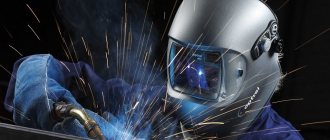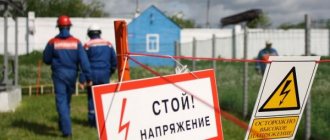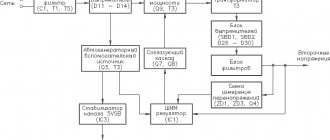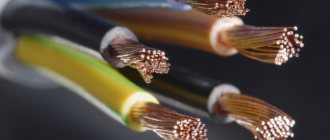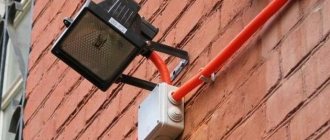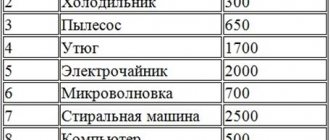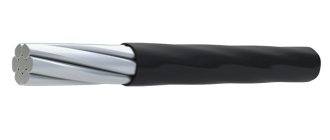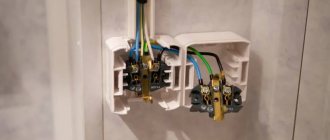Each of the existing electrical appliances, power tools, as well as electrical equipment and electrical installations pose a certain danger to humans. Of course, it doesn't turn out the same. It helps to determine the electrical safety class that has been introduced for each electrical device. We will get acquainted with these classes and their characteristics. Let us consider separately the electrical safety groups not only for equipment, but also for production premises and personnel.
Norms and standards
To ensure that the use of various electrical equipment is safe, designers, even at the design stage, solve a number of problems that can minimize and neutralize the risks from operation for humans. Such a solution could be enhanced insulation of conductive components, protective power cuts, separation of electrical circuits, etc.
Depending on such electrical safety measures taken, as well as the design of a particular product and the conditions of its use, the device is assigned a specific electrical safety class.
When classifying such electrical products, experts rely on the following state standards:
- GOST 12.2.007.0-75.
- GOST R IEC 536-94.
Definition
Protection class is a set of design measures to ensure human safety when working with a device or servicing it. They depend on the presence of grounding, residual current devices, additional insulation, housing material and its design features. Another definition is that it is a system for indicating the degree of protection for a person when working with power tools and other equipment. The class is marked with signs from 0 to III, where 0 means no protection, and III means safe equipment powered by reduced voltage.
Next, we will consider the list of types of protection and each class separately. Which option to choose depends on the requirements for the electrical installation and the conditions in which it operates. At the same time, it is impossible to say specifically which one is better: from a safety point of view, the higher the better; from the point of view of the cost of equipment, the appropriateness of a particular solution depends on the specific situation.
Main classes
The above standards introduce several electrical safety classes for devices, instruments, and production equipment:
- 0.
- I.
- II.
- III.
In addition to them, additional electrical safety classes of power tools are distinguished. We will introduce and characterize all of them further.
Group 0
What determines this equipment electrical safety class? Such devices have only operational isolation from AC or DC current. In the event of its (current) leakage, a grounding contact is not provided.
Here, open non-current-carrying conductive elements are not connected either to grounding or to the protective conductor of the electrical wiring. In the event that such insulation is broken, only the environment - air, flooring, etc. - can provide protection to a person. There are no dangerous voltage indicators on the housings of devices of this class.
It is permissible to use such devices only in spaces where there are no conductive grounded elements in the area where people are located, where there are no conditions of increased danger, where access to unauthorized persons is prohibited.
Therefore, such equipment must be installed only in dry spaces and rooms. If we rely on the recommendations of the International Electrical Commission, then the use of electrical equipment of class 0 should be completely abandoned. Why?
If the insulation on non-conductive elements of devices is damaged, voltage may arise that is dangerous to human health and life. Accordingly, this threat increases when operating Class 0 equipment in damp, damp areas.
An example would be any electrical appliance in a metal case that is not connected to ground by the manufacturer - the same electric stove with open heating elements. Another striking example is Soviet heaters equipped with open spirals.
Conditions affecting electrical safety
Due to the fact that water is an electrical conductor, high levels of humidity in industry are considered one of the most important parameters that are important to consider when calculating the safety level of a room. Water can accumulate not only on the floor and walls, but also directly on the body of the equipment.
High ambient temperatures can accelerate the aging process of insulating materials. The protective properties of the coating are lost, which can lead to an emergency.
High concentrations of chemicals in the air can reduce the insulating properties of electrical equipment. The conductive paths that appear during the oxidation process are another danger for the worker who works with this equipment.
To reduce the negative impact that may arise due to the above factors, enterprises should take safety measures: equipping cable systems with fire protection, covering the floor with material with dielectric properties, installing a ventilation system.
Group 00
What distinguishes this electrical safety hazard class from the previous one? There is a warning sign on the conductive body of such a device. In addition, equipment of class 00 can also be used in hazardous spaces and premises. For example, characterized by high humidity.
But at the same time, electrical personnel must be provided with the necessary protective equipment:
- Latex gloves.
- Rubber boots.
- Rubber galoshes.
- Rubber insulating mats, stands and work paths.
Of course, before using PPE, workers must be trained in the correct use of this personal protective equipment.
Examples of Class 00 electrical equipment include gasoline-powered portable electric generators.
What to consider when choosing
When choosing electrical equipment of a particular protection class, it is necessary to take into account the conditions under which operation will be carried out. For example, for devices located in a dry room of a complex transformer substation, class “0” will be quite sufficient. Accordingly, when choosing a power tool, you should give preference to at least class “II”
Instead of a conclusion.
At the end of the article, we present several interesting points regarding the protection class of electrical equipment of the recent Soviet past:
The absence of a grounding loop in most apartment buildings and industrial premises led to the fact that almost no electrical equipment was produced in the first group. As an alternative, equipment of the second safety category was widely used. Category 01 products with electrical or mechanical contact for protective grounding were also common.
Almost all household refrigeration equipment from the times of the USSR belonged to category “0”, and the operating conditions were considered to be of increased danger. Gas, water and heat supply pipes pass through the kitchen premises.
Electrical equipment classified as group 1 has poor operational insulation, this is due to the fact that it is intended to be connected to a ground loop. The operation of such devices without an electrical connection to the PE bus is much more dangerous due to the high difference in rated currents than the use of category “0” devices.
Television receivers continue to be positioned as electrical appliances of protection category II. But at the same time, they have unprotected current-carrying structural elements, in particular various types of connectors. However, it should be noted that in modern models, serious attention is paid to the insulation of high-voltage circuits, which practically eliminates electrical hazards when touching grounded structures and a TV antenna. An attempt to do this with a USSR-era television receiver could have ended tragically.
Source: www.asutpp.ru
Group 000
This electrical safety protection class has a number of distinctive features:
- Connecting the power line through an RCD.
- The magnitude of the differential current here cannot be higher than 30 mA.
- The response speed for this class is no more than 80 ms.
If the necessary personal protective equipment is available, then electrical equipment of class 00 can be used in spaces and premises that belong to the group of increased electrical hazard.
Group 0I
This class of hand-held power tools is distinguished next in terms of electrical safety. The current-carrying parts of such equipment are insulated, but there is no insulation on the metal components of the structure. Protection here is realized by mechanical or electrical contact with the PE bus. This ensures potential equalization. It also prevents the formation of electrical charges on metal elements when the insulation is damaged.
Here the contact with the ground loop will be displayed with a special graphic symbol. According to existing standards, ground wires have a yellow-green tint.
Examples include both stationary and rail-mounted devices, but not beyond the length of the ground wires. That is, cranes, electric locomotives, transformer substations, etc. Such installations will always be operated only with grounding.
Device design
Protection against electric shock
The fork is a prefabricated or one-piece device. The body is made of non-conductive material – flame retardant rubber.
On the side cut there are two round pins (4.8 mm in diameter). The distance between them is 19 mm. Perpendicular to them, two metal plates are recessed into the housing - for the neutral and grounding conductor.
The sockets have a recess in the housing to enhance contact with the plug and prevent touching the phase elements during operation of the devices. On the front part there are two holes for pins and receiving terminals for the neutral and conductor charger.
When connected, the ground contact is closed. Only after this does the phase and neutral conductors close into the circuit. Grooves are provided in the design for connecting plugs of powerful devices (boilers, furnaces, etc.) and sockets with built-in timers and relays.
Group I
A prerequisite for this class of electrical safety approval is the presence of both protective grounding and working insulation. As for grounding, it is usually implemented by installing a special plug where there is a mechanical contact that provides connection to the PE bus.
As for the metal shells of the device (for example, the housings of electrical tools, other metal structural elements), they are also connected to a common ground loop.
The main protection here is ordinary insulation. The conductive parts of the device are in contact with the protective conductors of the electrical wiring, which protects them from dangerous voltage. After all, the protection will work.
An example of equipment of this class is almost all existing household appliances and electronics - personal computers, food processors, dishwashers, etc.
IP (envelope protection degree)
Ingress Protection Rating is a system for classifying the degree of protection of the enclosure of electrical equipment from the penetration of solid objects and water in accordance with the international standard IEC 60529 (DIN 40050, GOST 14254-96)
The degree of protection of the enclosure of electrical equipment is marked using the international protection mark (IP) and two numbers, the first of which means protection from the ingress of solid objects, the second - from the ingress of water.
The code has the form IPXX, where the X positions are digits, or the X symbol if the degree is not defined. The numbers may be followed by one or two letters that provide supporting information. For example, a household electrical outlet may be rated IP22 - it is finger-resistant and cannot be damaged by vertical or near-vertical dripping water. The maximum protection for this classification is IP69: a dust-proof device that can withstand prolonged immersion in pressurized water.
The first characteristic digit indicates the degree of protection provided by the enclosure:
- people from accessing dangerous parts, preventing or limiting the penetration into the shell of any part of the body or object in the hands of a person;
- equipment located inside the shell from penetration of external solid objects.
If the first characteristic digit is 0, then the enclosure provides no protection against access to hazardous parts or penetration of external solid objects.
The first characteristic number, equal to 1, indicates that the enclosure provides protection against access to dangerous parts with the back of the hand, 2 with a finger, 3 with a tool, 4, 5 and 6 with a wire.
With the first characteristic digit equal to 1, 2, 3 and 4, the shell provides protection against external solid objects with a diameter greater than or equal to 50, 12.5, 2.5 and 1.0 mm, respectively.
At number 5, the shell provides partial, and at number 6, complete protection from dust.
| Level | Protection against foreign objects having a diameter | Description |
| 0 | — | No protection |
| 1 | >=50 mm | Large body surfaces, no protection from conscious contact |
| 2 | >=12.5 mm | Fingers and similar objects |
| 3 | >=2.5 mm | Tools, cables, etc. |
| 4 | >=1 mm | Most wires, bolts, etc. |
| 5 | Dustproof | Some dust may get inside, but this will not affect the operation of the device. Complete contact protection |
| 6 | Dustproof | Dust cannot enter the device. Complete contact protection |
The second characteristic figure indicates the degree of protection of the equipment from the harmful effects of water that the shell provides.
If the second characteristic digit is 0, then the shell does not provide protection from the harmful effects of water.
The second characteristic number, equal to 1, indicates that the shell provides protection against vertically falling drops of water; 2 - from vertically falling drops of water, when the shell is tilted at an angle of up to 15º; 3 - from water falling in the form of rain; 4 - from continuous splashing; 5 - from water jets; 6 - from strong water jets; 7 - from exposure to temporary (short) immersion in water; 8 - from exposure to prolonged immersion in water.
| Level | Defence from | Description |
| 0 | — | no protection |
| 1 | Vertical drops | Vertically dripping water should not interfere with the operation of the device |
| 2 | Vertical drops at an angle of up to 15° | Vertically dripping water should not disrupt the operation of the device if it is tilted from its operating position by an angle of up to 15° |
| 3 | Falling splashes | Rain protection. Water flows vertically or at an angle of up to 60° to the vertical. |
| 4 | Spray | Protection against splashes falling in any direction. |
| 5 | Jets | Protection against water jets from any direction |
| 6 | Sea waves | Protection from sea waves or strong water jets. Water that gets inside the housing should not interfere with the operation of the device. |
| 7 | Short-term immersion to a depth of 1m | During short-term immersion, water does not enter in quantities that disrupt the operation of the device. Continuous operation in immersed mode is not expected. |
| 8 | Long-term immersion to a depth of more than 1m | Completely waterproof. The device can operate in submerged mode |
| 9 | Long-term immersion under pressure | Completely waterproof under pressure. The device can operate in submerged mode at high fluid pressure. |
The additional letter indicates the degree of protection of people from access to dangerous parts and is indicated if:
- the actual degree of protection against access to hazardous parts is higher than the degree of protection indicated by the first characteristic digit;
- Only protection against the harmful effects of water is indicated, and the first characteristic digit is replaced by the symbol “X”.
The additional letter "A" indicates that the enclosure provides protection against access to hazardous parts with the back of the hand, "B" with a finger, "C" with a tool, and "D" with a wire.
| Letter | Access protection |
| A | back of hand |
| IN | finger |
| WITH | tool |
| D | wire |
The auxiliary letter "H" denotes high-voltage electrical equipment. The auxiliary letters "M" and "S" indicate that equipment with moving parts is in a state of motion or stationary, respectively, when tested to comply with the degree of protection against harmful effects due to ingress of water.
| Letter | Meaning |
| H | High voltage equipment |
| M | During water protection tests, the device worked |
| S | The device did not work during water protection tests |
| W | Weather protection |
The degree of protection of the enclosure can be indicated by an additional letter only if it satisfies all lower levels of protection, for example: IP1XB, IP1XC, IP1XD, IP2XC, IP2XD, IP3XD.
The German standard DIN 40050-9 extends IEC 60529 to IP69K for high-temperature, high-pressure washing. Such housings not only have strong dust protection (IP6X), but are also able to withstand high water pressure during washing.
The IP69K degree of protection was originally developed for road vehicles, especially those that require regular intensive cleaning (dump trucks, concrete mixers, etc.), but is now finding application in other areas (food and chemical industries).
Group II
Now let’s determine how electrical devices of this class differ. This is the presence of a double insulating coating in relation to conductive elements. But the metal components (in particular, the casing) will not be connected to the common ground loop.
As a result, there will be no special contact for protective grounding on the device plug. Electrical equipment and electrical appliances of this class can be used in rooms where air humidity can reach even 85%.
Sometimes they are divided into two subclasses - equipment with metal shells and fully insulated.
There are quite a few examples of such equipment: hair dryers, trolleybuses, electric drills, vacuum cleaners, street lamps.
Grounding in electrical installations
- All industrial and household electrical devices must be grounded in accordance with the technical data sheet.
- The housings and metal parts of the power plant are connected to the neutral and grounding conductor in accordance with the PUE.
Checking the status of the memory includes the following features:
- visual inspection of the charger itself and the place where it is secured to the power supply housing;
- checking the quality of connections and the absence of breaks;
- measurements of electrical resistance at the beginning and end of the conductor section;
- measurements of working soil values;
- the total grounding value must comply with the requirements of Chapter. 1.7 current PUE;
- Measurements of the charger resistance are carried out after the line has been installed and all electrical devices have been installed.
Group III
This will designate electrical equipment that is powered only through a voltage-sensing transformer. Therefore, devices of this class will operate on voltages of 36 and 48 V (AC or DC voltage, respectively).
Protection is ensured by the fact that the power is supplied from an ultra-low voltage that is safe for humans. And in the device itself there is no voltage greater than it.
This class includes many portable devices powered by rechargeable batteries, as well as devices with a low-voltage external power supply. These include laptops, flashlights, players, radios, etc. A grounding contact is not provided here in principle.
If the shell is conductive, then its connection to grounding conductors is allowed (but only if this is provided for in the standards for this device). Grounding may also be present for functional purposes (depending on the purpose of this grounding).
Tool classification criteria
The unit class is assessed by comparing the requirements for a given power tool with its real capabilities. For this purpose, there are a number of criteria according to which professional power tools are classified. Units are divided according to the following parameters:
- power;
- appointment;
- method of operation;
- electrical safety;
- resistance to heat;
- degree of protection against penetration of foreign devices.
Power classification
Which unit belongs to the professional class can be judged by its power. This can be easily checked by reading this characteristic on the instrument body.
Table of classification of power tools depending on their power
| Tool type | power, kWt | |
| Amateur | Professional | |
| Drill | 0,4-0,6 | from 0.8 |
| Circular Saw | 0,8 | 1-1,6 |
| Grinder | 0.6 | 2,2 |
| Jigsaw | 0,4 | 0,7 |
| Hammer | 0,6 | 1,4 |
| Chain Saw | 1,3 | 1,8 |
Classification by purpose
Professional units are distinguished by the type of work for which they are intended:
- For drilling, drilling and punching holes in various materials, drills, rotary hammers, jackhammers and universal combined devices are used. Combined units, by switching modes, can perform all of the above types of work.
- Grinding and polishing are performed with special tools that are equipped with grinding wheels or vibrating pads.
- Sawing of wood and other materials is carried out with electric and chainsaws, circular hand saws, angle grinders (grinders) and jigsaws.
- The auxiliary group of hand tools includes crimpers, hair dryers, spray guns, saws, pliers, hammers, files, construction vacuum cleaners and much more.
Jigsaw
Classification by method of operation
Based on the type of energy supply, power tools (EI) are divided into battery-powered and network-powered units:
Portable screwdrivers are powered by built-in batteries. They can keep the tool running for 1 hour. Professional tools function as screwdrivers and are also used as drills. The units are equipped with two batteries.
Important! While one battery powers the screwdriver, the second battery is in the charger. This ensures uninterrupted operation during the work shift
Cordless screwdriver
Network EI due to a stationary current source have much greater power. The tools have no restrictions on operating time. This does not mean that the unit does not need to be given a short “rest” to prevent the engine from overheating.
Electrical safety classification
To determine electrical safety classes of power tools, special markings in the form of numbers have been introduced.
The class of the device depending on the presence and type of grounding
| Class | Availability and type of insulation | Grounding | Purpose | Safety |
| Eat | Absent | Used in secure civil and industrial areas | The tool body is grounded | |
| 01 | « — « | Grounding without a special core in the wire | ||
| 1 | « — « | Grounding through the third core in the power cable | Grounding via socket | |
| 2 | Double-layer, reinforced | Absent | Industrial premises | Absent |
| 3 | « — « | « — « | In any dangerous conditions | « — « |
Most professional models are class 1 power tools. The number three in the electrical safety classification of power tools usually refers to household appliances.
Classification by heat resistance
The higher the class of resistance to engine overheating, the less often you have to take breaks in operation. The low category of EI forces you to stop for 20 minutes every 15 minutes of operation of the unit. The EI class is indicated in the labeling in Latin letters. The lowest category (900) corresponds to the letter “Y”, the highest heat-resistant motor winding is about (1800C).
Note! The thermal stability of the windings depends on the material of the motor protection. For this, cellulose, silk, resins, organic films, and mica are used.
Fiberglass, elastomers, ceramics and quartz are also used.
Categories of premises
You can also distinguish classes of premises according to electrical safety:
- No increased danger. These are spaces with low air humidity (up to 45%). There is a ventilation and heating system. Floors are non-conductive (earthen, reinforced concrete, earthen, etc. are considered conductive). If this is a production workshop, then its floors are covered with dielectric. In such rooms there are no high temperatures, dampness, chemical environments, conductive floors and dust.
- With increased danger. What can be said about this electrical safety class of premises? A space will be included in the category if it meets at least one of these conditions: damp (air humidity more than 75%), conductive dust is constantly present, there is a conductive floor covering (reinforced concrete, brick, metal, earthen), constantly high temperatures (more than 35° WITH). These are also those rooms where people can simultaneously touch the metal shells of the equipment and the grounded metal structure of the building.
- Particularly dangerous. These are rooms with “special dampness” (in some cases it can reach 100%), spaces in which there is an active chemical or organic environment (which can destroy equipment). Premises that fall under any two conditions from the “high-risk” category are also considered particularly dangerous.
CLIMATE DESIGN OF ELECTRICAL EQUIPMENT
Trivial - climatic design determines the operating conditions of electrical equipment for the corresponding climatic regions (zones). Indicated by an alphanumeric code.
The letter part indicates the climate zone, and the digital part indicates the location (conditions) of placement (see table).
| Letter part | Climate (version) | Digital part | Accommodation |
| U | Moderate | 1 | on open air |
| HL | Cold | 2 | in conditions excluding direct sunlight |
| UHL | Moderate and cold | 3 | closed room without air conditioning (heating, ventilation) |
| T | Tropical | 4 | closed room with air conditioning (heating, ventilation) |
| M | Marine temperate | 5 | rooms with high humidity, without air conditioning |
| ABOUT | General climatic, except sea | ||
| OM | General climatic marine | ||
| IN | All-climate |
Staff classes
Let's also get acquainted with the electrical safety classes of personnel:
- First group. Assigned to workers who do not work on electrical installations or service them.
- Second group. Assigned to electrical engineering personnel working on electrical equipment. It is possible to work on electrical installations, but under supervision and without connection.
- Third group. Assigned to electrical personnel servicing electrical equipment. Gives you the right to independently connect and inspect devices with voltages up to 1000 V.
- Fourth group. A specialist can work with installations in which voltage exceeds 1000 V.
- Fifth group. Maximum responsibility is expected. A specialist can not only work with all existing electrical devices, but also manage work on them and act as a person responsible for the area of electrical equipment.
We have analyzed the main electrical safety classes, as well as well-known subcategories and their characteristics. Electrical safety groups have also been introduced for personnel, premises, and production spaces.

